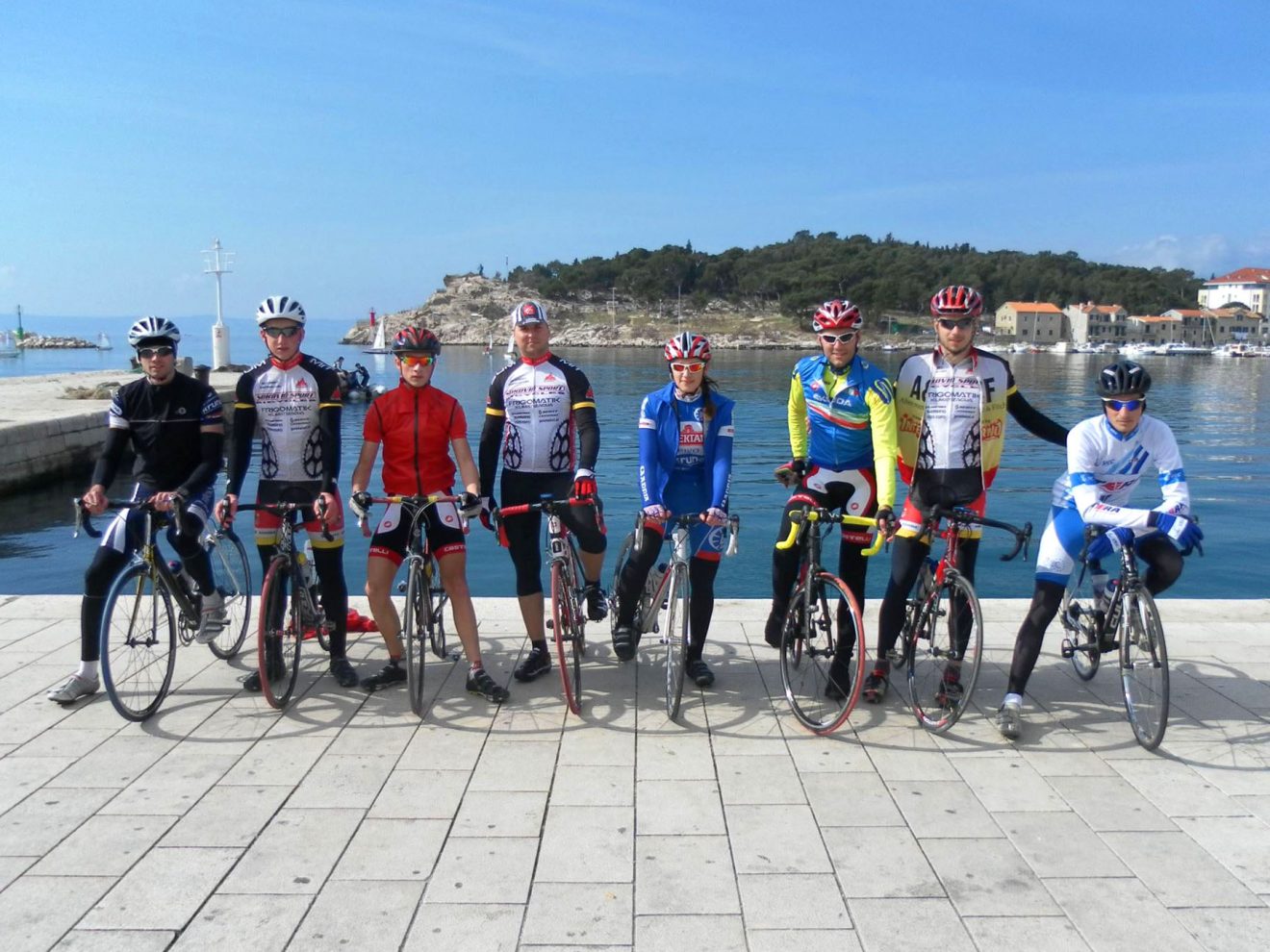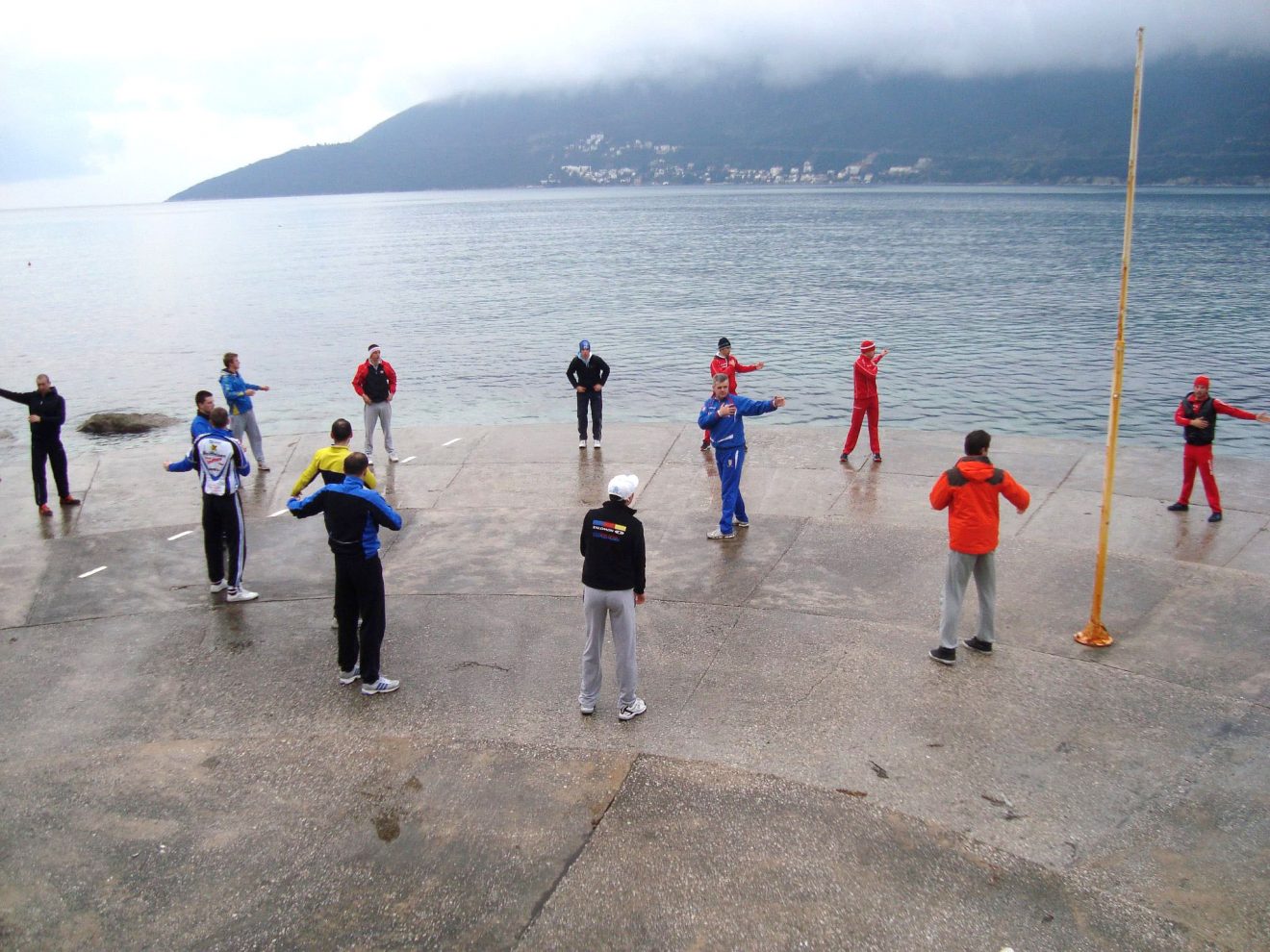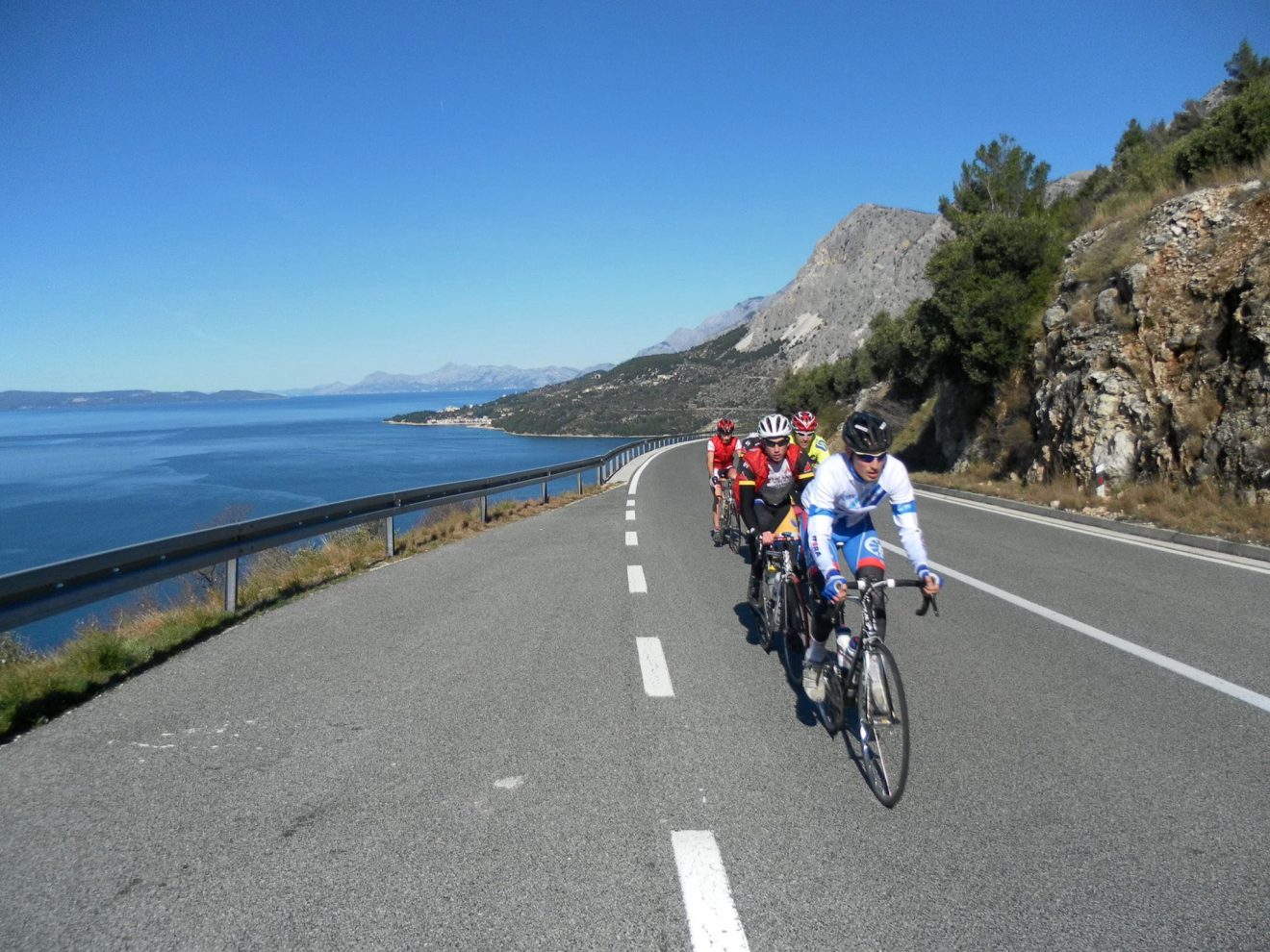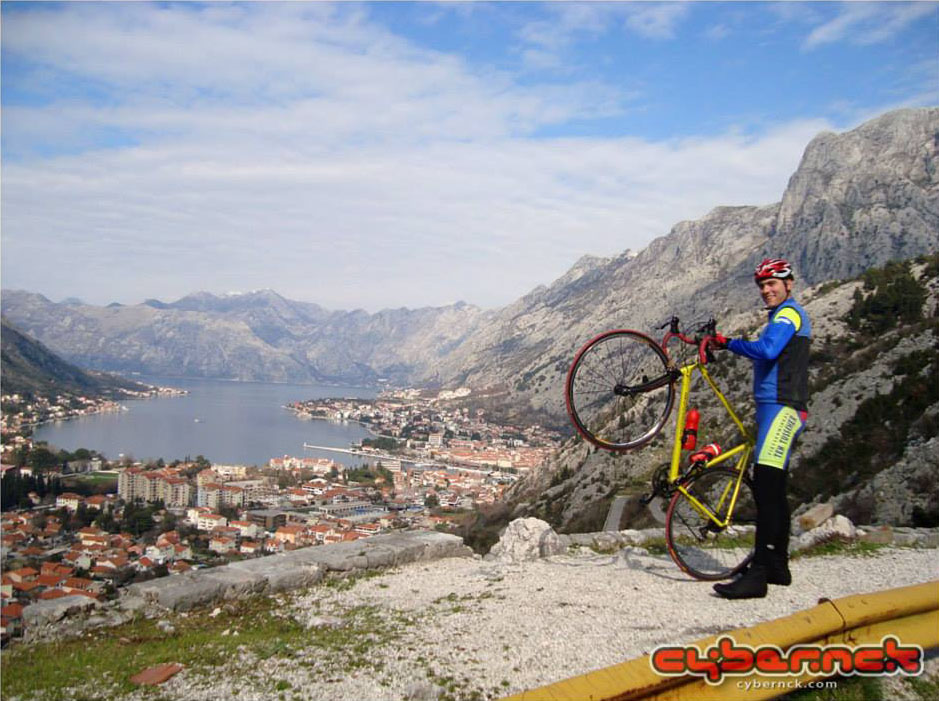Winter is on my head, but eternal spring is in my heart.
– Victor Hugo
An established practice of cycling teams and national selections is to hold a (winter) base training camp just prior to the start of the racing season, which serves the purpose of improving the form, team building and gives an opportunity to coaches and team leaders to asses the form of their riders so they could to create tactics and schedule races.

I need vitamin sea
Almost as a rule of thumb, base training camps are held in warmer regions, usually at seaside. Teams but also individuals, the wealthier ones, spend this period which for them lasts over a month, mainly in the south of Spain and the Canary Islands. Smaller teams from Europe usually opt for Croatia and Montenegro, which is closer and more accessible to them and spend 10-15 days doing the preparations. The character of the rides is mostly the same as what we have described in the article on base preparations for cyclists, that is – racking up kilometers in combination with doing long constant climbs.
Although a bicycle is ridden individually (except than if it’s a tandem :)), cycling is a team sport and it is a great feeling to be part of a team, to get to know each other and socialise in this way. It is an additionally special experience if you have the opportunity to spend the camp with a more serious team, such as when back in 2013 I have had the opportunity to be together with the junior and senior Serbian national teams. It was a small but significant insight into how organised teams led by top experts work and function.

The day started with early morning jogging and exercise, followed by breakfast, preparation for training and going on a ride of about 120 to 180 km in length. After coming back, we would go on a lunch, of course suited to cyclists, then rested for a bit, had an evening walk, socialising and dinner. In case of extremely bad weather, trainings were performed on turbo trainers. Towards the end of the camp, coaches tested the riders to see what is their current performance like on the flats and on the climbs.

But I’m not a pro!
It is not that important – the principle remains the same. A great number of enthusiasts, GranFondo riders, advanced recreational riders etc. resort to individual training camps in similar locations, possibly in a slightly shorter period, i.e. from 5 to 10 days. Riding on seaside in off season (both competition and tourist seasons) is a fantastic feeling and few would not like to experience it – of course, if your lifestyle, work and free time allow it.

Is it possible to “work from home”?
Of course, we can downsize the principle to an even smaller extent and still get positive effects, because at this stage every training is very well adopted by our body. So, if you managed to do some winter preparations and base rides and you are not able to go on a base camp or it is simply a case of bad weather conditions or lack of free time stretching deeper into this period (which also happened to me a few times) – you can resort to the following technique.
Set aside an extended weekend for three combined rides of 100 to 130 km in length and at least one meaningful climb on each of the rides, riding at a solid pace. After that, you are free to take a complete break from cycling for at least a couple of days. When you resume with the rides, you will feel that a progress in the base form has occurred. After a couple of easier rides, try to get into the previously described base rides system, where you will do shorter more intense rides with longer tempo riders, in order to get back on track :).
I hope this short story, combined with concrete tips, will contribute to the growth of motivation for your further course of training.
